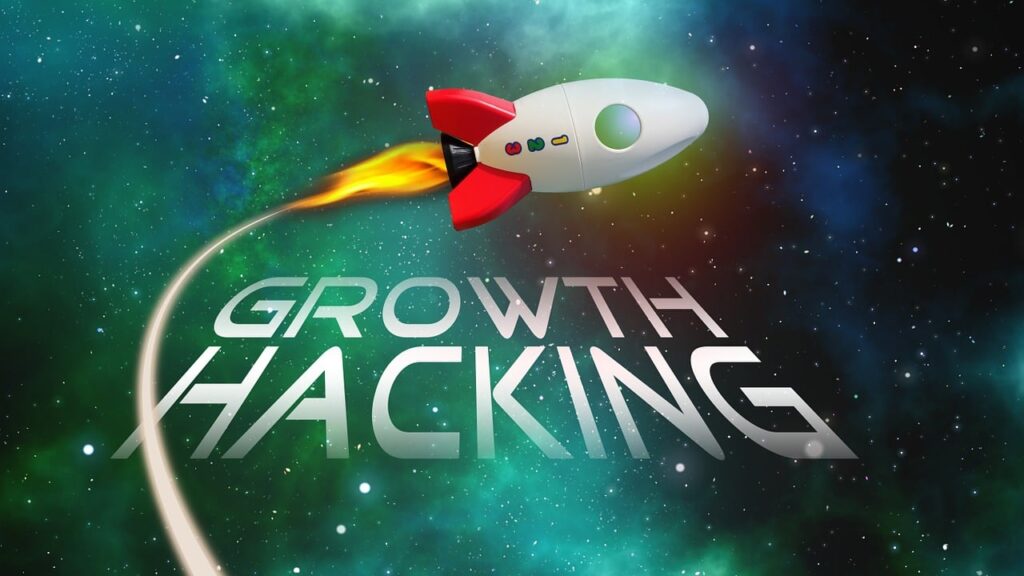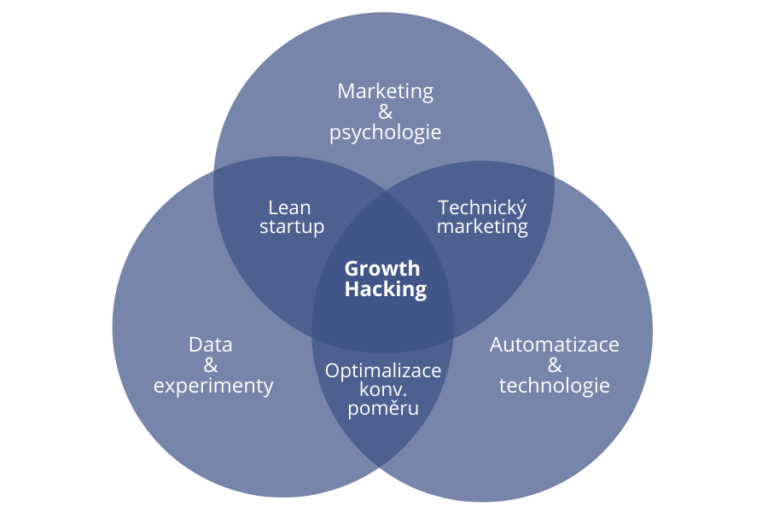Introduction: Growth Hacking Isn’t a Gimmick—It’s a Mindset Shift in Startup Strategy
The term “growth hacking” often stirs curiosity, confusion, or even skepticism—especially among traditional marketers and founders who are accustomed to more structured, long-cycle marketing strategies. But at its core, growth hacking is neither a buzzword nor a shortcut to virality; it is a mindset that combines product development, user behavior psychology, rapid experimentation, data-driven decision-making, and creative marketing to achieve accelerated, scalable, and sustainable business growth—usually with minimal resources. Growth hacking emerged from the startup trenches, where founders couldn’t afford million-dollar marketing budgets but still needed to drive user acquisition, engagement, retention, and revenue. It is uniquely suited for early-stage companies that live and die by speed and adaptability. The most successful growth hackers are those who treat the product itself as the greatest channel for growth, who obsessively test and optimize every touchpoint of the user journey, and who deeply understand that growth is not a department—it’s a company-wide obsession that informs product, engineering, marketing, and customer success simultaneously. As the digital ecosystem becomes more saturated and attention spans shrink, the need for lean, repeatable, and high-leverage growth tactics has never been more pressing. And that’s where growth hacking truly shines—not by promising instant results, but by relentlessly seeking high-impact wins and scalable loops that compound over time.
The DNA of a Growth Hacker: What Sets Them Apart
Growth hackers aren’t just marketers who use a few analytics tools or dabble in A/B testing. They are hybrid problem-solvers who bring together the skills of a marketer, a data analyst, a product manager, and an engineer, with the soul of a relentless experimenter. A true growth hacker doesn’t ask, “How can we promote this product?”—they ask, “How can we build a product that promotes itself?” This inversion of traditional thinking sets growth hackers apart from conventional teams. They live in a world where vanity metrics are useless, and only meaningful metrics like user activation rates, churn rates, lifetime value (LTV), and viral coefficient matter. They use behavioral triggers, psychological nudges, referral incentives, viral loops, and feedback cycles to drive exponential—not linear—results. Most importantly, growth hackers are guided by data and are not afraid to throw away ideas that don’t work—even if they were passionate about them. It’s this fusion of creativity and analytics, coupled with speed and ruthless pragmatism, that makes growth hackers the architects of modern startup success.

Finding Your North Star Metric: Aligning the Whole Team to One Growth Objective
Every company needs a single, quantifiable metric that reflects the core value it delivers to users—and this is known as the North Star Metric (NSM). This metric becomes the lighthouse for every growth experiment, campaign, and product feature. For Spotify, it might be “minutes streamed per user per week”; for Airbnb, it might be “nights booked”; for Slack, “messages sent within a team.” The power of a North Star Metric is that it forces alignment across departments—marketing, product, engineering, and customer success all begin to work toward a unified goal, rather than chasing disconnected KPIs. Growth hacking without a clear NSM leads to scattered efforts and diluted focus. The NSM also helps identify leverage points in the funnel where small improvements yield massive results. A company optimizing for “nights booked” might realize that increasing the number of properties per city drastically improves retention and referral. This clarity allows growth teams to prioritize their experiments around the biggest bottlenecks and opportunities, ensuring that growth isn’t accidental—it’s engineered.
Viral Loops: The Holy Grail of Organic Growth
The most elegant growth strategies aren’t bolted on—they’re built in. That’s the philosophy behind viral loops, where every new user naturally invites more users through incentives or utility. Dropbox famously offered additional storage space for referring friends, creating a viral loop embedded directly into the user experience. Airbnb leveraged the existing network of Craigslist to drive demand and supply simultaneously. True viral growth happens when each user not only derives value from your product but also increases the product’s value for others by participating. This creates a self-sustaining loop where the cost of acquiring a user becomes negative—because each user brings in others. For a viral loop to work, three elements must be optimized: the incentive (what the user gets), the ease of sharing (how frictionless the referral is), and the timing (when the user is asked). Growth hackers test dozens of variations across these variables to find the perfect recipe for virality—and once found, viral loops can compound faster than any paid channel ever could.
Onboarding as a Growth Lever: Optimize the First 5 Minutes
The single most overlooked growth opportunity in most products is the onboarding experience. If users don’t see value quickly, they churn—even if your product is brilliant. The job of onboarding is not just to “show” features but to guide users toward their first moment of success—the “Aha!” moment. Growth hackers treat onboarding like a funnel within the funnel: every screen, tooltip, notification, or email is tested and optimized to improve activation. Companies like Duolingo, Slack, and Notion have world-class onboarding because they’ve boiled it down to the core user journey, stripping away distractions and hand-holding the user until they feel a sense of accomplishment. Great onboarding doesn’t just reduce drop-off; it turns curious visitors into habitual users. And once you’ve increased activation rates, every dollar spent on acquisition becomes exponentially more valuable. For startups with limited runway, improving onboarding is often the single highest ROI investment they can make.
Retention Before Acquisition: Building a Product That Deserves to Grow
One of the most profound truths in growth hacking is this: retention is more important than acquisition. It’s easy to buy traffic, run ads, or go viral on social media. But if users don’t stick around, none of it matters. Retention is the ultimate signal that your product solves a real problem in a valuable way. Growth hackers look at cohort retention curves, segment users by behavior, and dig deep into churn reasons—not to report metrics, but to fix them. They use re-engagement campaigns, behavioral triggers, and habit-forming design patterns to bring users back repeatedly. If your product retains users, every growth experiment becomes easier. If it doesn’t, it’s like pouring water into a leaky bucket. Before trying to scale with growth hacking tactics, ensure that your core product experience delivers consistent, repeated value—and that your user base would genuinely miss your product if it disappeared.
Leveraging Content and SEO as Compounding Growth Engines
While viral loops and paid ads get the spotlight, content and SEO are the silent engines of long-term, compounding growth. Growth hackers treat blog posts, landing pages, video tutorials, and documentation not just as marketing content but as acquisition assets. They obsess over keyword strategy, backlink profiles, internal linking architecture, and user intent mapping. For example, Zapier ranks for thousands of “how to integrate X with Y” queries—bringing in millions of users annually with almost zero marginal cost. Great SEO content is not just about ranking—it’s about delivering so much value that users convert without being pushed. The trick is in finding high-intent, low-competition opportunities, and producing evergreen content that ages well. Once a single post starts bringing in traffic, it becomes an annuity—paying growth dividends for months or even years. And the more content you create, the more authority your domain gains, creating a flywheel of organic visibility and credibility.
Rapid Experimentation and the A/B Testing Culture
At the heart of growth hacking is a test-and-learn culture, where no idea is sacred, and everything is an experiment. Growth teams run A/B tests on signup flows, landing page copy, pricing pages, email subject lines, referral mechanisms, onboarding sequences, and feature placement. What matters is not what “feels” right—but what data confirms. The best teams use tools like Google Optimize, Optimizely, VWO, and custom-built solutions to test hypotheses rapidly. The secret isn’t in running a few tests but in creating a culture where experiments are cheap, failures are expected, and insights are shared. At any given time, high-performing growth teams are running dozens of parallel experiments—some of which will fail, a few will succeed marginally, and occasionally, one will change the growth trajectory of the entire company. Over time, these compounding insights build an unfair advantage that competitors simply can’t replicate.
Leveraging Scarcity and Urgency Psychology in Digital Campaigns
One of the most underutilized yet incredibly effective growth hacking techniques is the strategic use of scarcity and urgency psychology in digital experiences. This doesn’t just mean throwing a countdown timer on your landing page or marking a few items as “limited stock.” It involves crafting an ecosystem where potential users feel a genuine time-sensitive pull to engage with your product or service. Smart entrepreneurs engineer perceived scarcity by segmenting launches—using early-access invites, gated waiting lists, and limited enrollment windows—not to artificially boost numbers, but to mirror high-demand dynamics that create social proof and psychological momentum. When a user believes they might lose access to a valuable opportunity, their likelihood to act increases dramatically. Tactically, this can include dynamic pricing tied to sign-up windows, progressive unlocks for new features based on user tiers, or community-level access that is limited to first movers. The goal is not manipulation, but behavior-driven design. Scarcity and urgency are not gimmicks when used honestly—they are powerful forces of human decision-making that, when baked into the product journey, can accelerate user activation and viral adoption.
Community-Led Growth as a Self-Sustaining Engine
Many early-stage startups overlook community-led growth because it seems slow or hard to quantify—but in reality, it’s one of the most powerful forms of scalable, long-term traction available. Building a product-centric or mission-driven community around your startup allows users to become stakeholders in your journey, brand, and values. When users are empowered to contribute—whether through content, feedback, feature ideas, support forums, or advocacy—they develop a sense of ownership that goes far beyond typical user engagement. This dynamic transforms customers into co-creators and evangelists, which not only reduces churn but also drives new user acquisition through social referrals and word-of-mouth. More importantly, communities create resilience. If you ever pause paid acquisition, the community keeps the momentum alive. Tactically, this could mean launching a Discord or Slack group early, designing a beta program that rewards deep participation, or running ambassador initiatives where power users shape product strategy. A thriving community is not just a marketing asset—it’s a living feedback loop that fuels retention, loyalty, and organic visibility, creating a self-sustaining engine of growth that doesn’t rely on ads.
Building Feedback Loops into Your Core Product Experience
Feedback loops are often misunderstood as something external—like NPS surveys or in-app ratings—but true growth hackers build feedback loops into the product’s DNA. This means every user action contributes data, outcomes, or insights that not only improve the product but also drive additional usage or virality. Think of Duolingo’s gamified progress feedback or Spotify’s Wrapped feature—both take user behavior and turn it into personalized reinforcement that encourages continued engagement. But feedback loops can go deeper: feature-level usage data can be analyzed in real-time to optimize onboarding paths; product notifications can adapt dynamically based on drop-off signals; user-generated content can become a source of SEO growth and community credibility. The most successful startups don’t just collect feedback passively—they design systems where user behavior actively shapes product evolution, UX decisions, and even marketing direction. When feedback is built into the user journey at a foundational level, startups not only grow smarter—they grow faster, more targeted, and more resilient against missteps.
Embedding Virality Inside Value, Not Just Features
Many startup founders make the mistake of bolting on a “share” button or referral code and calling it viral marketing. But real embedded virality occurs when the core value of the product is amplified by user interaction and sharing. For example, in tools like Notion or Canva, the more a user creates, the more they naturally want to share their creations—thus spreading the product as a byproduct of value delivery. This kind of growth is far more sustainable than incentivized referral hacks because it aligns product usage with user goals and external impact. Startups should ask: Can the output of my product be shareable? Can one user’s use inherently benefit another? Think multiplayer collaboration, content creation, or even API integrations that allow cross-app experiences. If your product gets better the more people use it or becomes more valuable when shared, you’ve embedded virality inside the value—not just on top of it. And this form of viral loop is far harder for competitors to copy because it’s inseparable from the product experience itself.
Conclusion: Growth Hacking Is Not a Tactic—It’s a Systemic Philosophy
The most successful startups today don’t think of growth as a phase that follows product development—they embed it into the DNA of their company from day one. Growth hacking is not about chasing the latest trend or copying what worked for another startup—it’s about building custom growth systems rooted in your unique product, market, and user psychology. It’s about relentlessly learning from user behavior, quickly testing new ideas, and continuously optimizing every touchpoint of the customer journey. Whether it’s embedding viral loops in your product, crafting hyper-relevant onboarding flows, creating high-utility content, or tuning your North Star Metric—growth hacking gives founders a powerful edge in today’s competitive landscape. And as AI, automation, and real-time data tools continue to evolve, growth hacking will only become more agile, more predictive, and more personalized. Founders who master this approach won’t just grow—they’ll redefine what sustainable growth means in a digital-first world. So stop thinking of growth as a “marketing problem.” Start thinking of it as a company-wide strategy—and execute it like a hacker.
Growth hacking, far from being a narrow set of quick-win marketing tricks or temporary traffic-boosting stunts, is truly a multi-dimensional mindset rooted in relentless experimentation, deep customer empathy, cross-functional collaboration, data obsession, and a refusal to accept traditional constraints as immovable. It is the philosophy of agility merged with the precision of science. In today’s hyper-competitive digital ecosystems, where attention spans are fleeting and consumer choices are unlimited, growth hacking emerges not just as a way to grow, but as a way to survive, evolve, and thrive. It demands that startups question everything—from how they acquire users to how those users are onboarded, activated, retained, and turned into advocates. It isn’t about throwing spaghetti at the wall and hoping something sticks. It’s about rapidly testing hypotheses in micro-bursts, doubling down on what works, and killing what doesn’t without ego or delay. The difference between stagnation and scale is often a single insight discovered through ruthless iteration.
Moreover, what makes growth hacking so potent and yet so misunderstood is that it blurs the lines between disciplines. A successful growth hacker understands not only marketing, but also product design, behavioral psychology, engineering constraints, analytics infrastructure, and user journey optimization. This is why growth hacking isn’t something one department owns—it is a company-wide culture of obsessive curiosity and structured chaos. Startups that have institutionalized this mindset often end up unlocking exponential results, not through increased budgets, but through increased velocity of learning and responsiveness to user behavior. In these organizations, “growth” is not an outcome—it is an operating principle embedded in every decision, every design, and every conversation.
The most powerful aspect of growth hacking, however, lies in its deep commitment to user-centricity. Despite its reputation for being data-heavy and experiment-driven, growth hacking, at its core, is about discovering the deepest desires, problems, and habits of users—and then engineering value delivery around those discoveries. It is about removing friction, enhancing delight, creating urgency, and ultimately crafting an experience so compelling that users not only stay, but bring others with them. Whether it’s a referral loop cleverly disguised as a collaboration tool, a personalized onboarding experience that guides with surgical precision, or a community strategy that turns customers into evangelists—growth hacking at its best is about aligning business outcomes with user success in ways that are elegant, efficient, and emotionally resonant.
But perhaps the most overlooked truth is that growth hacking is not a phase—it is a lifecycle discipline. It does not end once product-market fit is achieved. It does not retire once user acquisition goals are hit. It continues across every stage—pre-launch, launch, maturity, and even reinvention. The tactics may evolve. The platforms may change. But the philosophy of lean experimentation, radical empathy, and continuous optimization will always remain relevant. Startups and even large enterprises that forget this truth often plateau or decline, while those that remain committed to the iterative nature of growth continue to scale, adapt, and lead.
In the end, to truly embrace growth hacking is to commit to a journey of constant discovery. It is to accept that there is always a better, faster, cheaper, more human way to grow, and that it is your job to find it—not once, but repeatedly. For those willing to approach it with discipline, creativity, and humility, growth hacking is not just a method. It is a superpower. One that doesn’t just propel startups into success—but transforms the way they think, build, and win.


